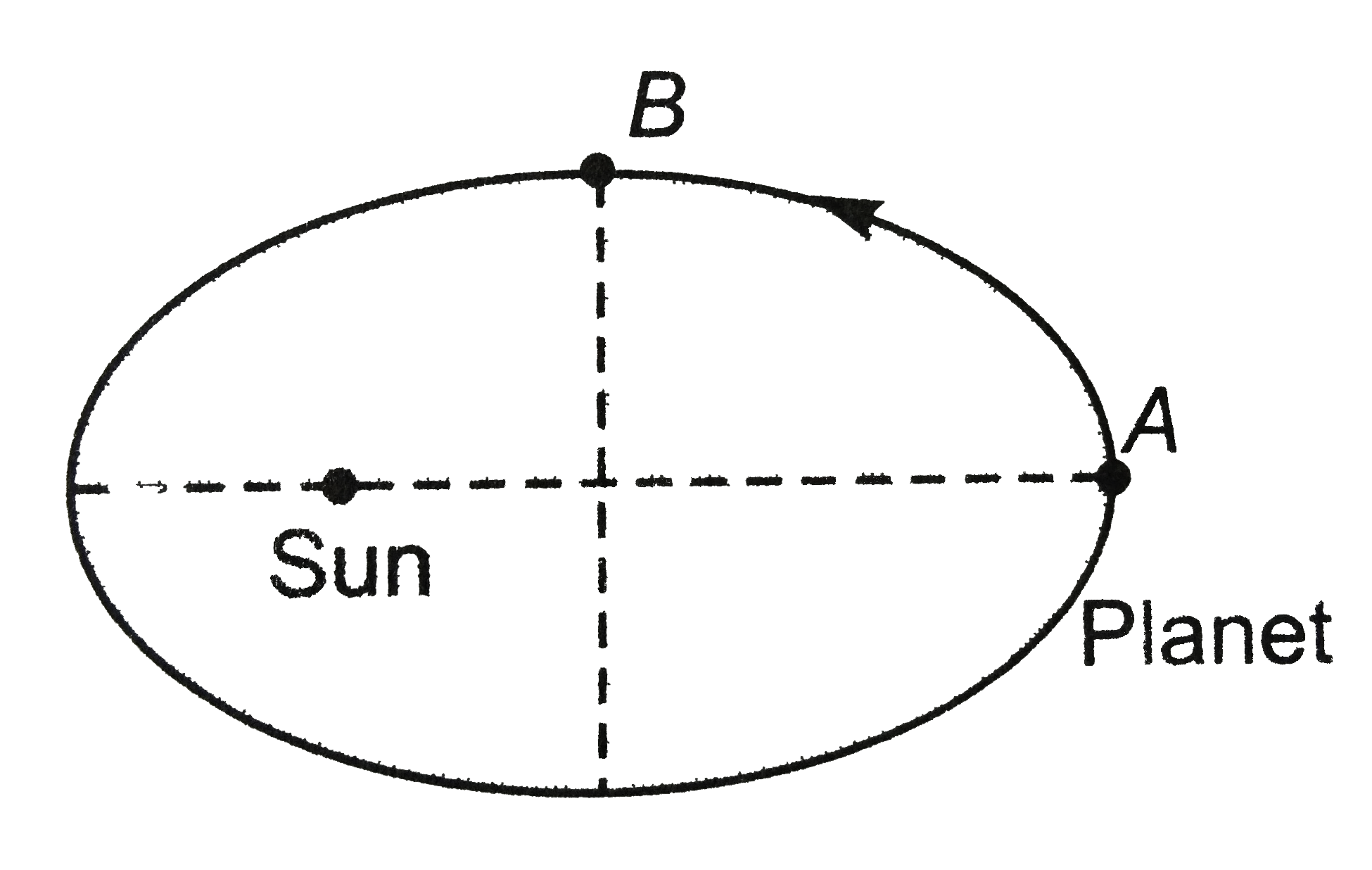If the angular momentum of a planet of mass m, moving around the Sun in a circular orbit is L, about the center of the Sun, its areal velocity is :
Lm
4Lm
L2m
2Lm
To solve the problem of finding the areal velocity of a planet moving around the Sun in a circular orbit, given its angular momentum L and mass m, we can follow these steps:
1. Understanding Areal Velocity:
Areal velocity is defined as the area swept out per unit time by the radius vector of the planet. The formula for areal velocity A is given by:
A=AreaTime
2. Calculating Area and Time:
For a circular orbit, the area A swept out in one complete revolution is given by:
Area=πr2
where r is the radius of the orbit.
The time taken for one complete revolution (the time period T) is:
T=2πrv
where v is the orbital speed of the planet.
3. Substituting into the Areal Velocity Formula:
Substituting the expressions for area and time into the areal velocity formula:
A=πr2T=πr22πrv=rv2
Thus, we have:
A=rv2(1)
4. Expressing Angular Momentum:
The angular momentum L of the planet is given by:
L=mvr
From this, we can express the velocity v in terms of L:
v=Lmr(2)
5. Substituting Velocity into Areal Velocity:
Now, substitute the expression for v from equation (2) into equation (1):
A=r(Lmr)2
Simplifying this, we get:
A=L2m(3)
6. Final Result:
Therefore, the areal velocity of the planet is:
A=L2m
Summary:
The areal velocity A of a planet of mass m moving in a circular orbit around the Sun, with angular momentum L, is given by:
A=L2m
Areal velocity is defined as the area swept out per unit time by the radius vector of the planet. The formula for areal velocity A is given by:
A=AreaTime
For a circular orbit, the area A swept out in one complete revolution is given by:
Area=πr2
where r is the radius of the orbit.
T=2πrv
where v is the orbital speed of the planet.
Substituting the expressions for area and time into the areal velocity formula:
A=πr2T=πr22πrv=rv2
Thus, we have:
A=rv2(1)
The angular momentum L of the planet is given by:
L=mvr
From this, we can express the velocity v in terms of L:
v=Lmr(2)
Now, substitute the expression for v from equation (2) into equation (1):
A=r(Lmr)2
Simplifying this, we get:
A=L2m(3)
Therefore, the areal velocity of the planet is:
A=L2m
The areal velocity A of a planet of mass m moving in a circular orbit around the Sun, with angular momentum L, is given by:
A=L2m
Similar Questions
Knowledge Check
If a planet revolves around the sun in a circular orbit of radius a with a speed of revolution T, then (K being a positive constant
AT=Ka2/3BT=Ka3/2CT=Ka2DT=Ka3
Find the angular momentum of a satellite of mass m moving round the earth of mass m if its orbital radius is r, assuming it to be circular. Express it in terms of G, M, m and r, where G is the universal gravitational constant ?
View SolutionA planet is moving round the sun in an elliptical orbit as shows. As the planet moves from A to B

View SolutionWhen a planet moves around the sun
View SolutionIdentify the incorrect statement about a planet revolving around Sun
View SolutionThe angular momentum (L) of an electron moving in a stable orbit around nucleus is
View SolutionThe satellite of mass m revolving in a circular orbit of radius r around the earth has kinetic energy E. then, its angular momentum will be
View SolutionThe earth, moving around the sun in a circular orbit, is acted upon by a force and hence work must be done on earth by this force.
View Solution
